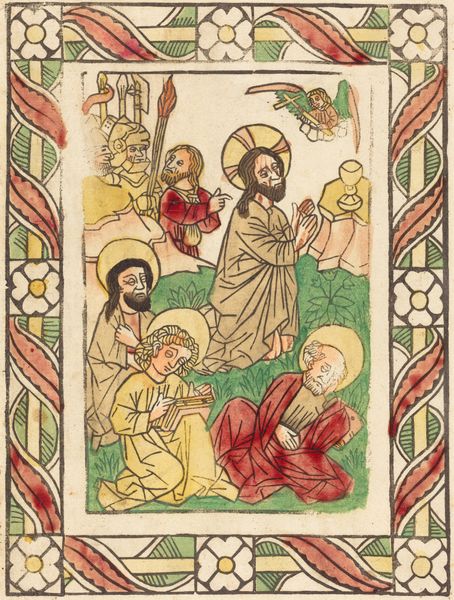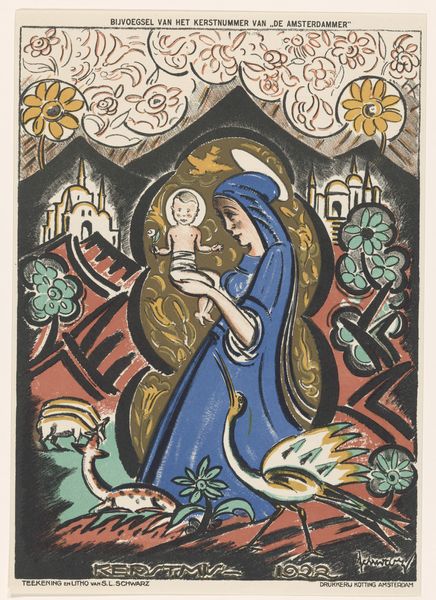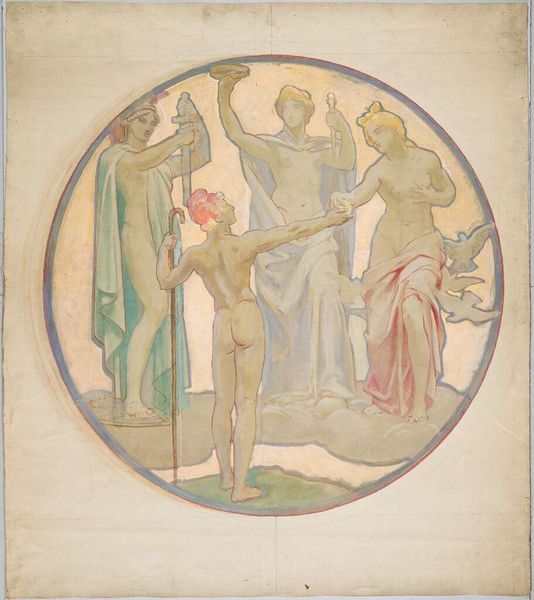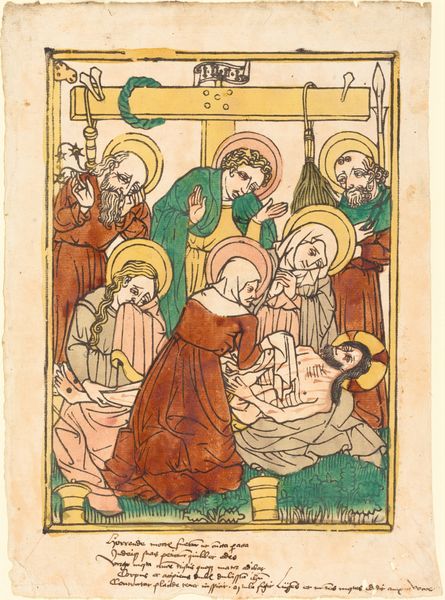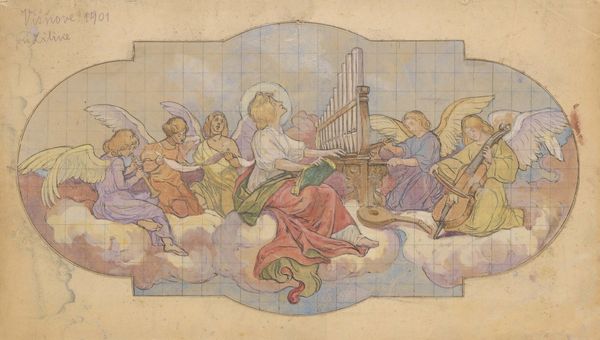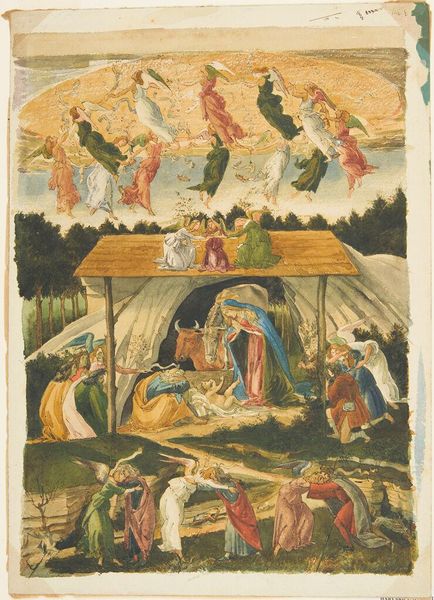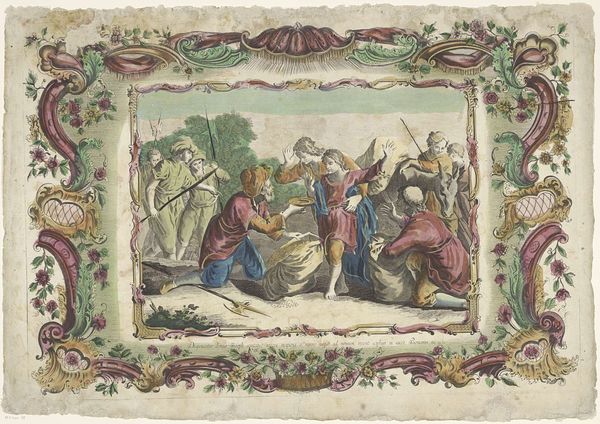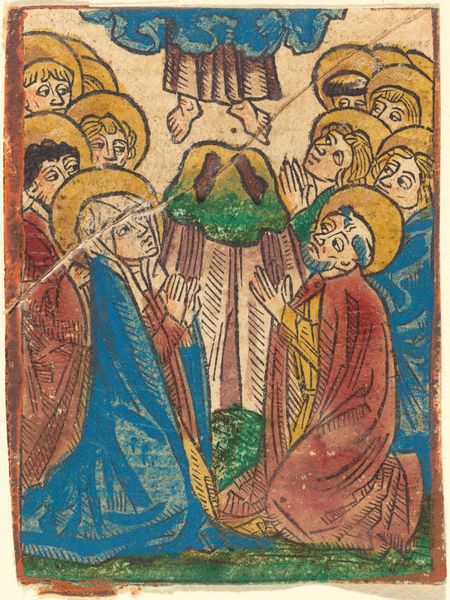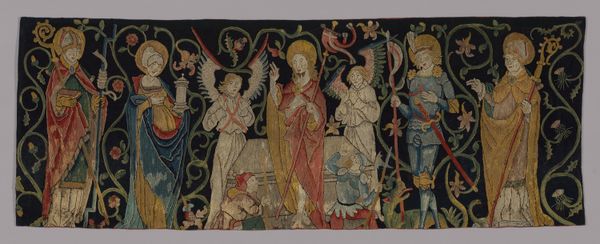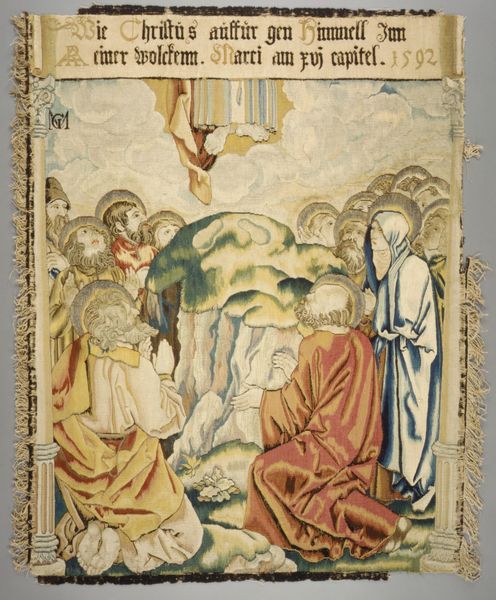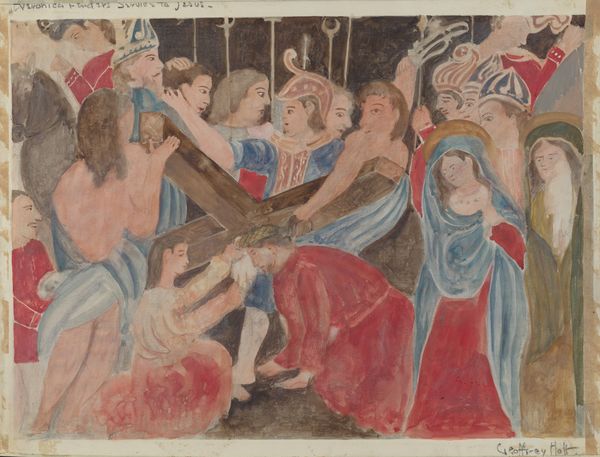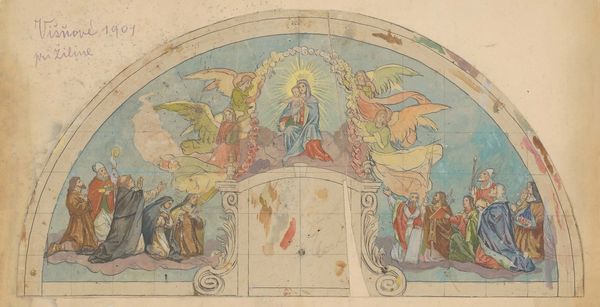
Dimensions: support: 235 x 311 mm
Copyright: CC-BY-NC-ND 4.0 DEED, Photo: Tate
Curator: Charles Fairfax Murray gives us "Five Angels around a Book," a watercolor work held by the Tate. The small scale imbues it with a sense of intimacy. Editor: There's a contemplative mood that radiates from this piece. The muted colors and the angels’ quiet gazes really draw you in. Is it about the power dynamics of angelic knowledge? Curator: Murray's work, particularly his engagement with pre-Raphaelite aesthetics, often looked back to earlier artistic traditions. Considering Victorian spiritualism and its obsession with the angelic realm, I think it challenges the patriarchal structures of religious institutions. Editor: Yes, and I wonder about the absence of a clear narrative. Is the book a symbol of shared wisdom or perhaps a source of debate? The angels' diverse emotional expressions hint at a range of perspectives. Curator: Their expressions, and the book itself, become contested sites of meaning. The Victorian era, with its stringent social norms, faced challenges to conventional gender roles. Murray presents angels—traditionally messengers of the divine—as active participants in interpreting knowledge, possibly hinting at the emerging power of female intellect and spirituality. Editor: It's a potent reminder that even depictions of the ethereal can be grounded in social commentary. Curator: Absolutely. By examining its historical context, we find that "Five Angels around a Book" transcends mere aesthetic beauty, offering a silent, but powerful commentary on knowledge, power, and gender.
